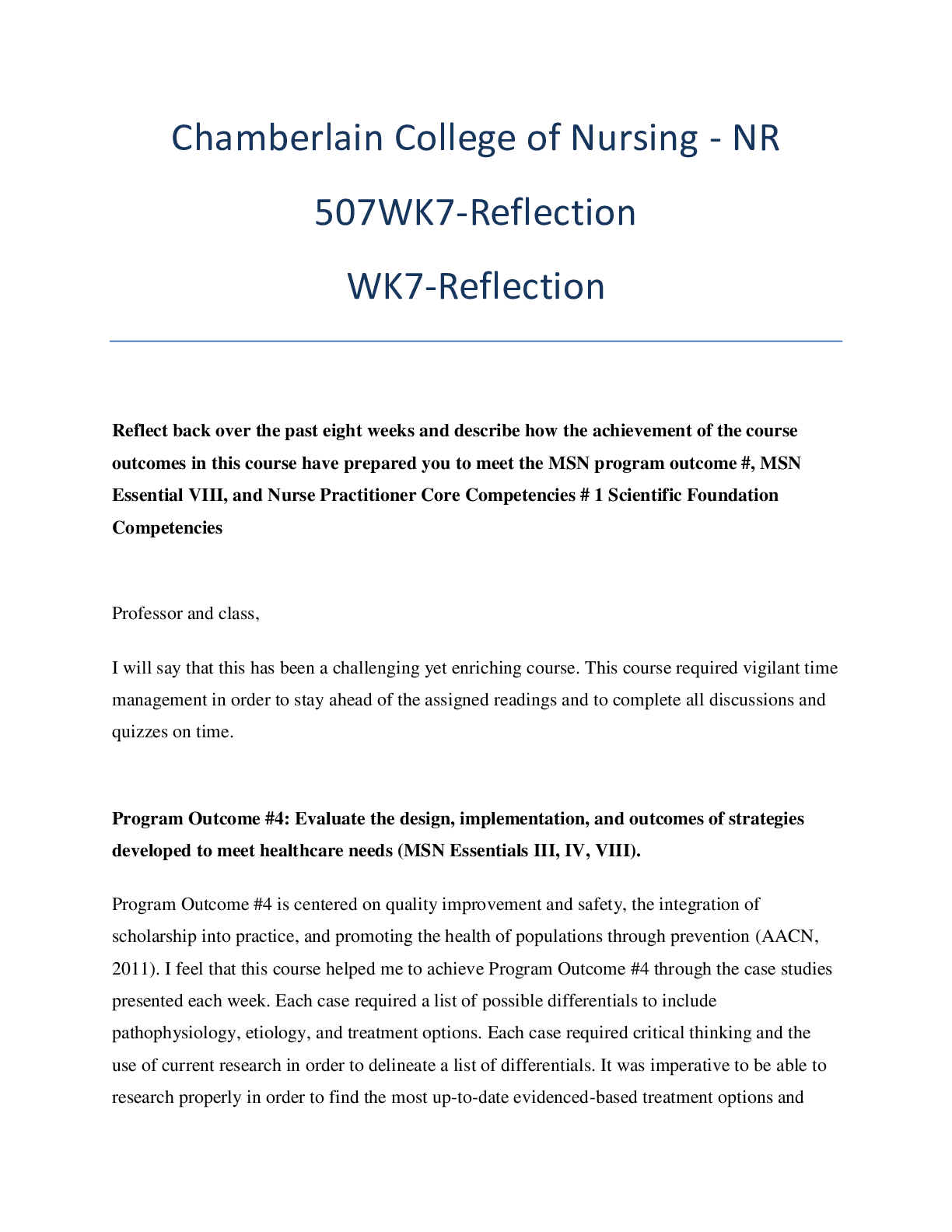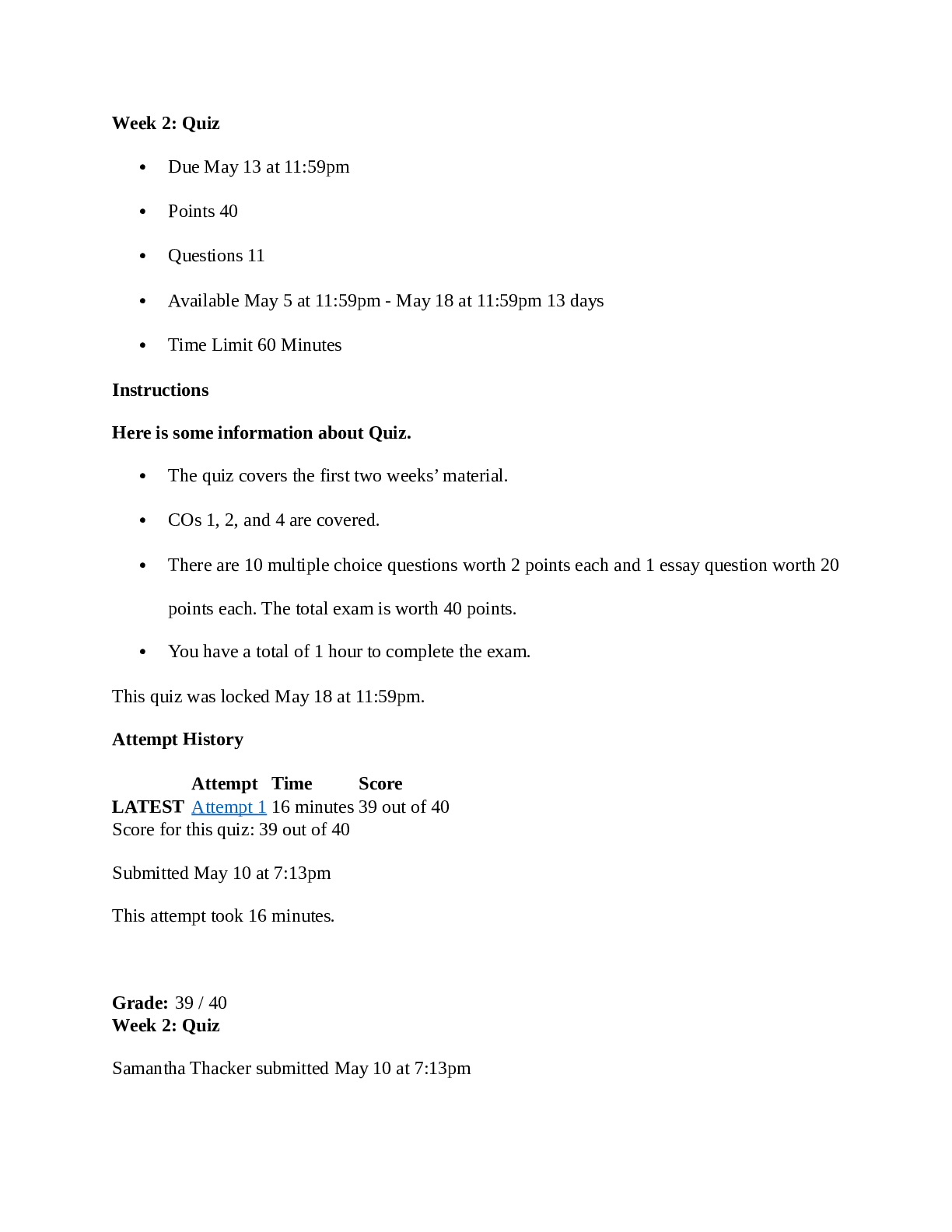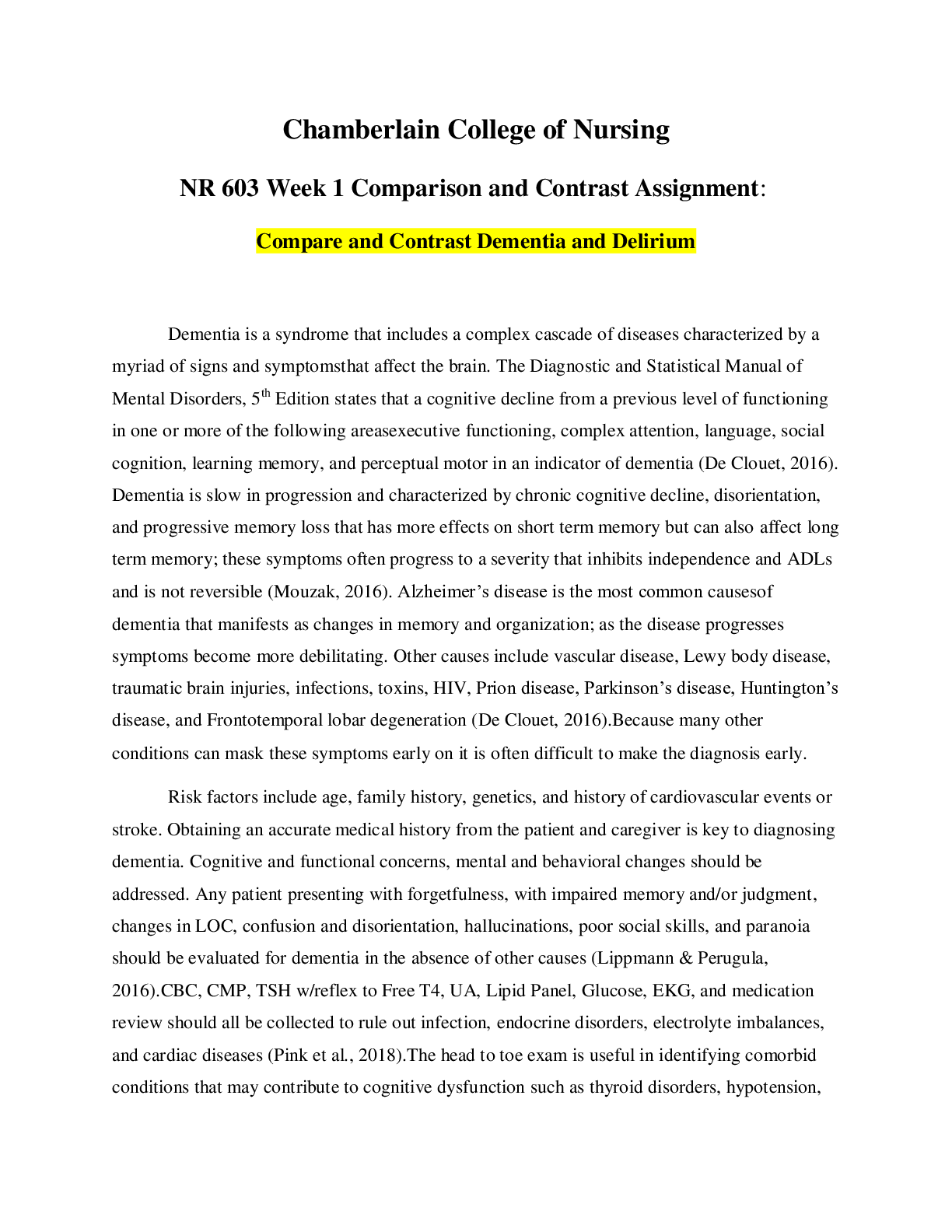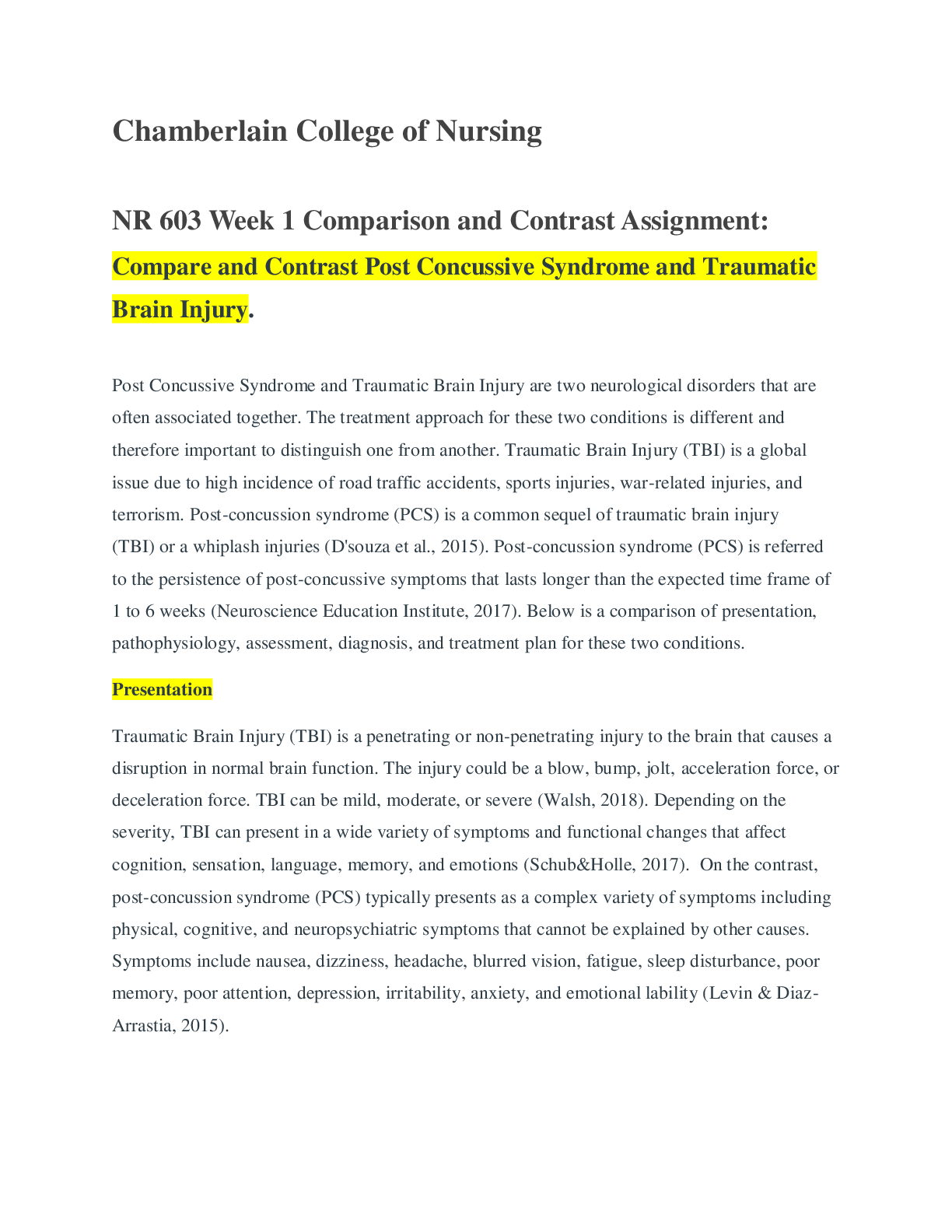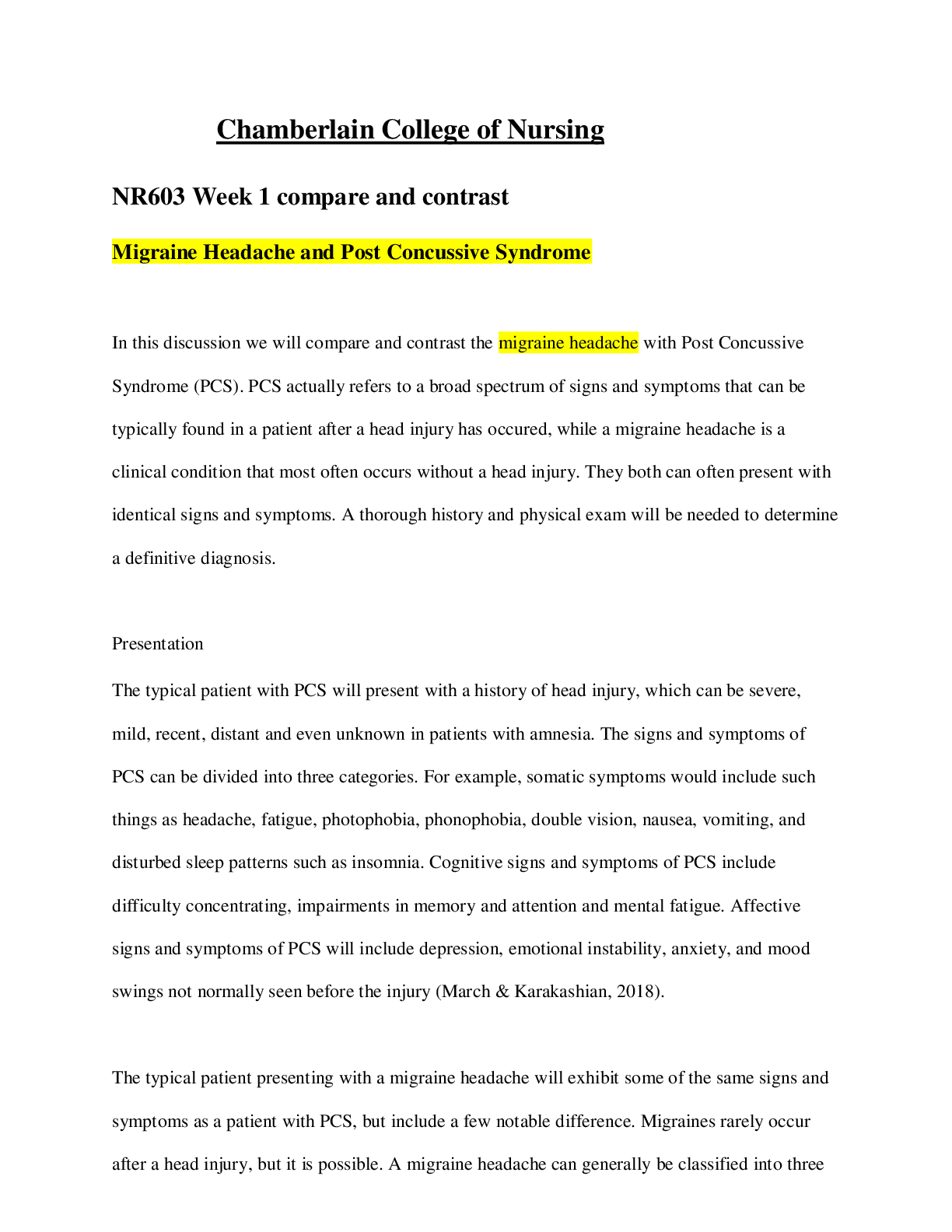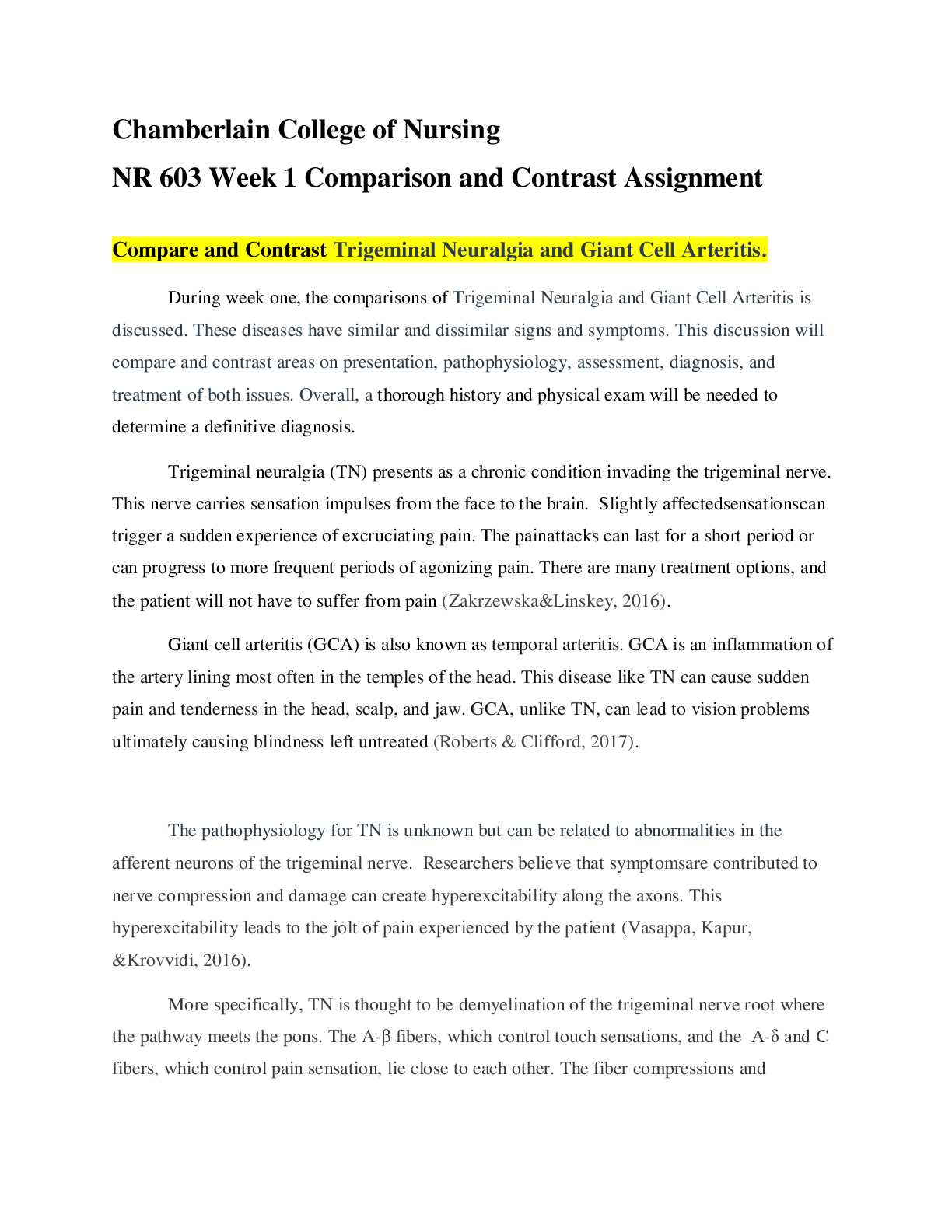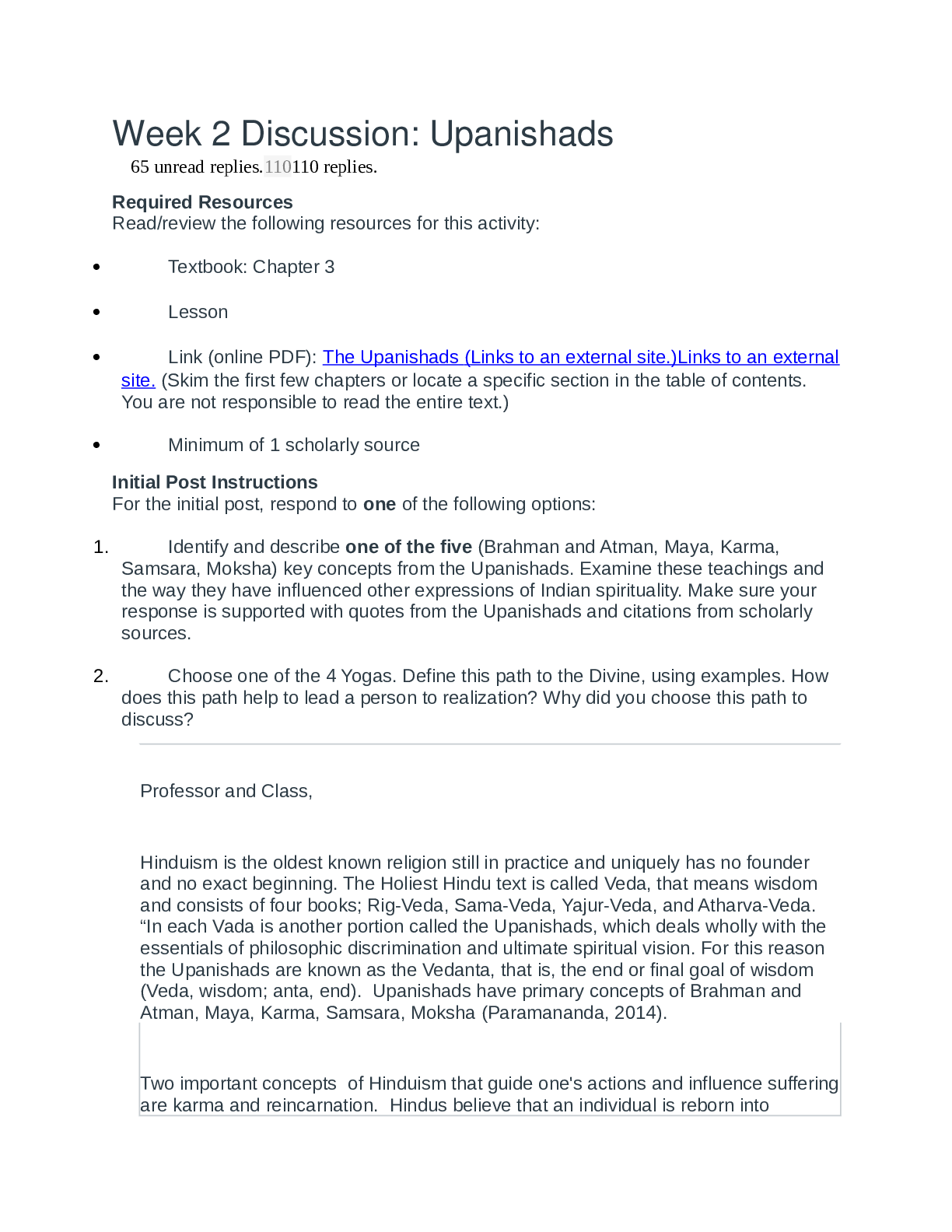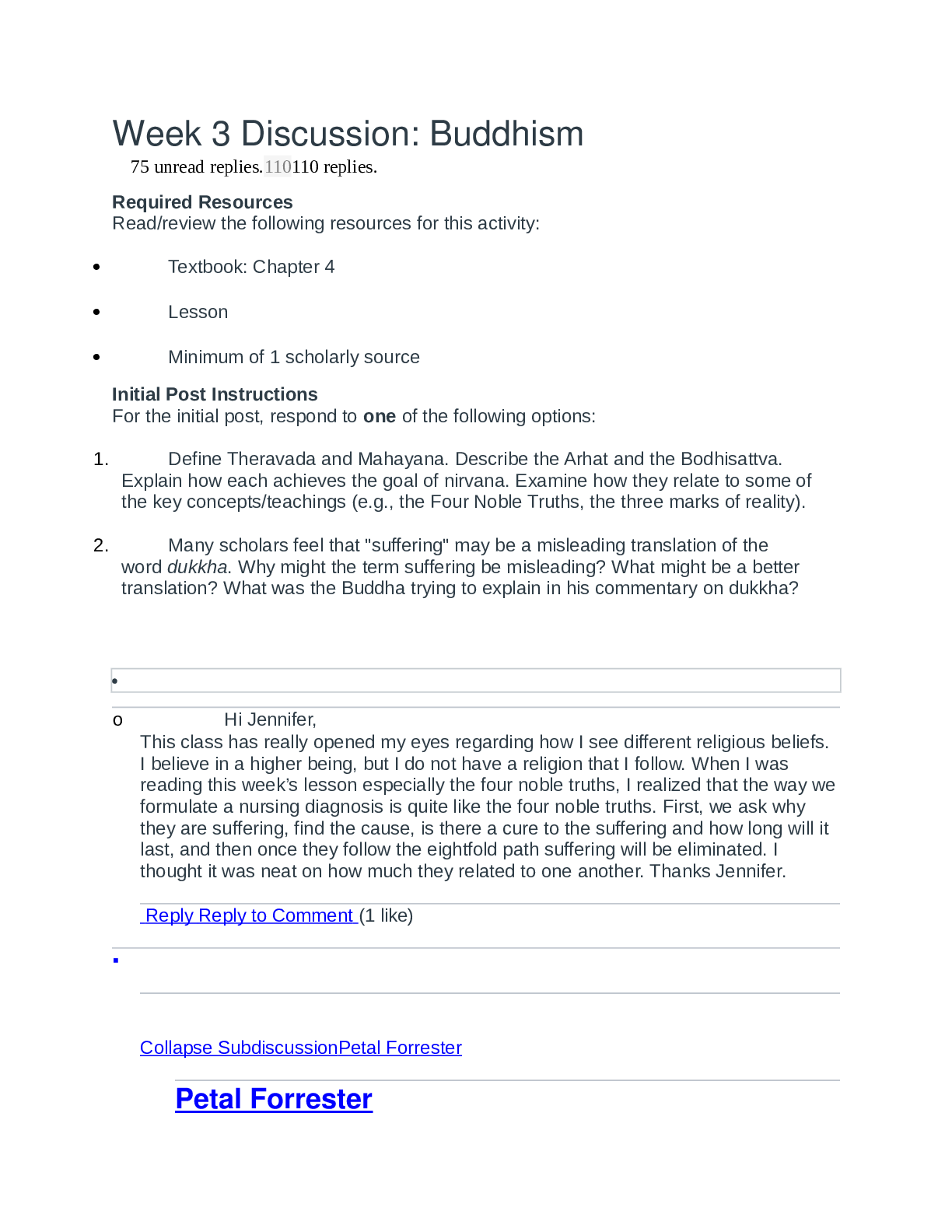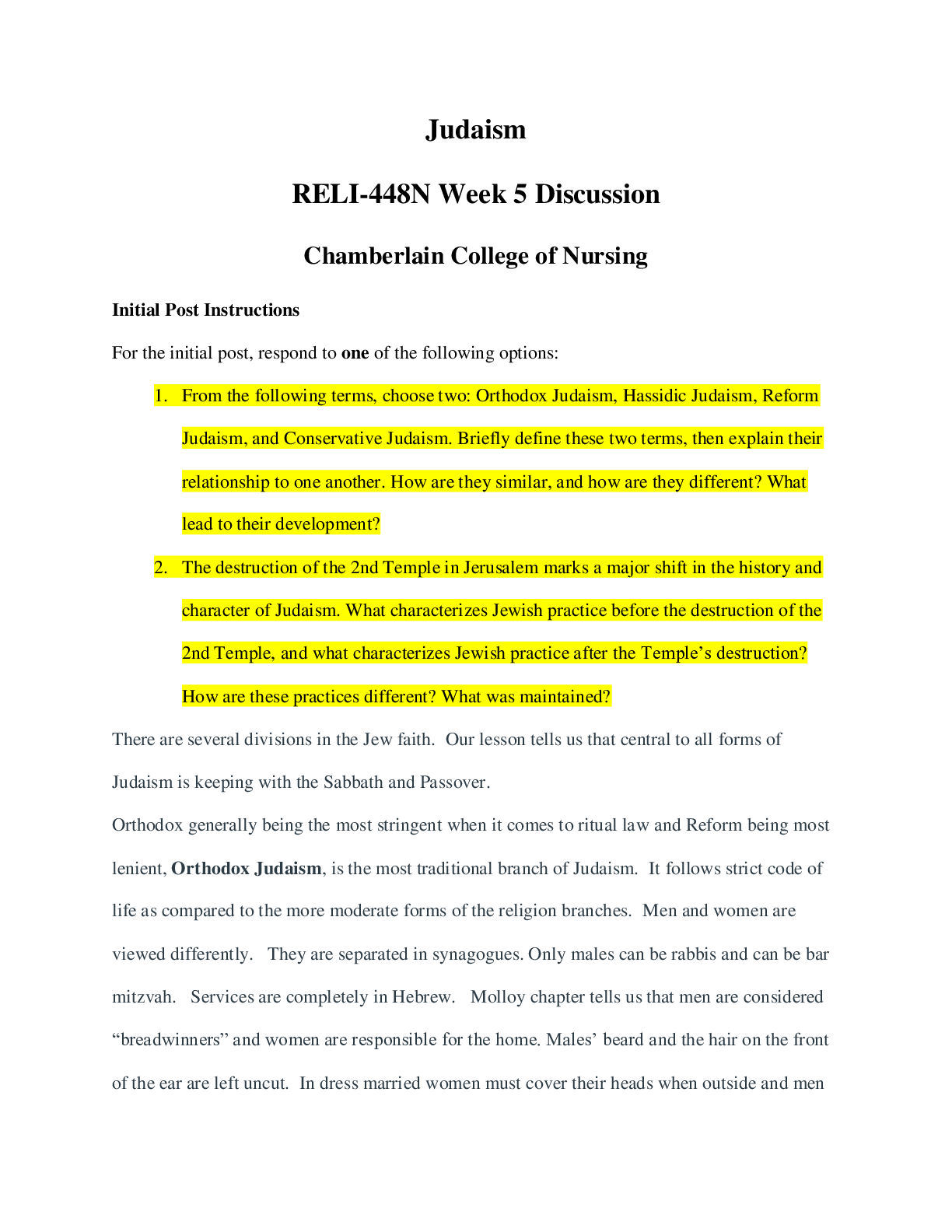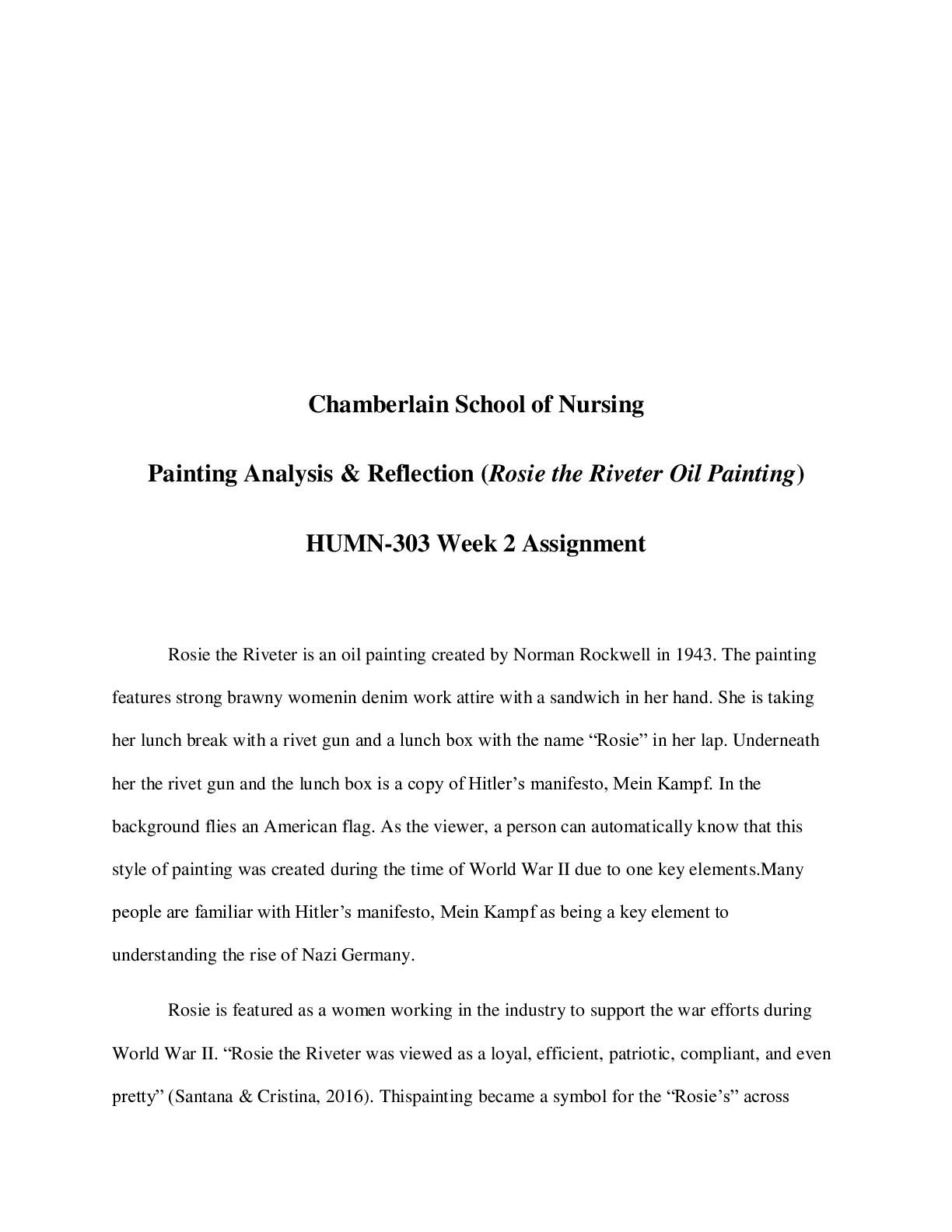*NURSING > ESSAY > Chamberlain College of Nursing - NR 503Wk 6 - Evaluation of Epidemiological Problem paper. (All)
Chamberlain College of Nursing - NR 503Wk 6 - Evaluation of Epidemiological Problem paper.
Document Content and Description Below
Running head: EVALUATION OF EPIDEMIOLOGICAL PROBLEM 1 Evaluation of Epidemiological Problem: Rabies Jessica Knezevich Chamberlain College of Nursing NR503: Population Health, Epidemiology, and Sta... tistical Principles Summer A, June 2017EVALUATION OF EPIDEMIOLOGICAL PROBLEM 2 Evaluation of Epidemiological Problem: Rabies This disease exists on every continent of the planet save Antarctica (Shimao & Caiping, 2016). If swift action is not taken, the malady is always fatal but is preventable through a vaccine (Shimao & Caiping, 2016). Thoughts of this ailment conjure images of snarling animals, frothing muzzles, and red, murderous eyes. The sickness is brought on by a simple viral infection transmitted through the bite of an infected animal (Shimao & Caiping, 2016). The disease is the rabies virus. Worldwide, the World Health Organization (WHO) (2017) estimates that rabies causes roughly 55,000 of deaths each year and over fifteen million people receive the post-exposure vaccine saving hundreds of thousands of lives (Shimao & Caiping, 2016). While more than 95% of cases of this disease occur in Asia and Africa, it is a very real threat in the United States (WHO, 2017). The Ohio Department of Health (ODH) states that the last known case of rabies in a human was in 1970 but they investigate over 21,000 animal bites each year (ODH, 2017). Several species of animals carry rabies in Ohio including bats, cats, dogs, raccoons, and skunks (ODH, 2017). Bats and raccoons make up most of the rabies cases where there is transmission from animal to human in the U.S. (Centers for Disease Control and Prevention (CDC), 2016). Throughout the rest of the world, over 95% of animal transmission to human is via dog bite (WHO, 2017). The vaccination program in the U.S. has been extremely successful in eliminating rabies in dogs (WHO, 2017). While rare, rabies is still a threat to humans as neighborhoods encroach on wildlife and people travel to endemic areas. As an advanced practice nurse in a rural area, it will be important for this author to educate patients on the benefits of vaccinating their animals against rabies and what to do if they are bitten by a wild animal. Through the sections of background and significance, current surveillance methods, [Show More]
Last updated: 1 year ago
Preview 1 out of 14 pages
Instant download

Buy this document to get the full access instantly
Instant Download Access after purchase
Add to cartInstant download
Reviews( 0 )
Document information
Connected school, study & course
About the document
Uploaded On
Mar 12, 2021
Number of pages
14
Written in
Additional information
This document has been written for:
Uploaded
Mar 12, 2021
Downloads
0
Views
98




.png)




.png)



